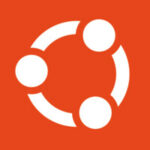Ah yes, the Big-Data revolution. To listen to the vendors and the Apache Hadoop faithful, Big Data is the latest and greatest buzzword that will save your company from wasteful spending, ineffective marketing campaigns, and customer bleeding. It’s the best of Business Intelligence, Business Analytics, Data Mining, and a whole lot more, tied up with a ribbon.
But is Big Data really about gleaning all that juicy information from transaction logs, enterprise databases and unstructured data sources? Not quite. Right now, Big Data is mostly about just having a place to put all your data so you can actually perform calculations across it.
And that’s why, while Big Data isn’t just about Hadoop, we believe that right now, Big Data is mostly about Hadoop. That’s because Hadoop is today’s best general solution for cost-effectively storing huge chunks of data and then performing computation across that data.
Yes, there are dozens of companies that will sell you expensive solutions to do just this, but Hadoop is the best way to get in the Big-Data room without spending millions of dollars for the privilege.
So Big Data, step one, is about putting your information into Hadoop. The second step, which is where we expect most data-rich enterprises to be by the end of this year and into 2013, is to begin to actually ask that data questions. That’s where analytics tools come into the picture. And as you can see in our Big-Data story this month, that’s also where a lot of companies are hoping to make a big impact. But until enterprises get their data into a Hadoop cluster (or any alternative platforms that spring up), all the analytics in the world won’t matter: A petabyte of data is just a concept unless you’ve got a place to put it.
#!
In memory of Alan Turing
Alan Turing, the British mathematician and computer scientist, was born on June 23, 1912—one hundred years ago this month.
To computer scientists and historians, Alan Turing is most famous for his work at Bletchley Park, England, during World War II. His algorithms were critical to breaking German codes, and for his involvement in the construction of computers (called bombes) that helped automate the decryption process. His name is synonymous with the Enigma, the German navy’s fiendishly complicated code machine.
Turing is also known for his work on what we call the Turing Machine, a theoretical device that he envisioned could solve any computer algorithm that could be described on paper tape. Well, it could solve almost any algorithm. Sometimes the Turing Machine would halt and present a solution. Sometimes it would not halt and would keep running forever, meaning the problem could not be solved. Turing worked hard on the halting problem, which is fundamental to the study of modern computer science.
And of course, there is the Turing Test, his thought experiment that said that if a computer could trick a human into thinking that he or she was conversing with another human, then the computer could be said to be thinking. Through the Turing Test and other works, Alan Turing is one of the fathers of artificial intelligence.
Sadly, the homosexual Turing was a victim of that era’s intense prejudice. After being forced to endure chemical castration as the only alternative to imprisonment for violating Britain’s decency laws, the brilliant mathematician committed suicide at age of 41.
The Association for Computing Machinery created the A.M. Turing Award in 1966 to recognize lasting and major technical contributions to the field of computer science. In this issue, the award’s recipients (including this year’s winner Judea Pearl) talk about what Turing meant to their interest in computer science.
At the centenary of his birth, we dedicate the 10th anniversary of the SD Times 100 in memory of Alan Mathison Turing, OBE, FRS, for his extraordinary contributions to computer science, mathematics, cryptography, artificial intelligence and, posthumously, human rights.





